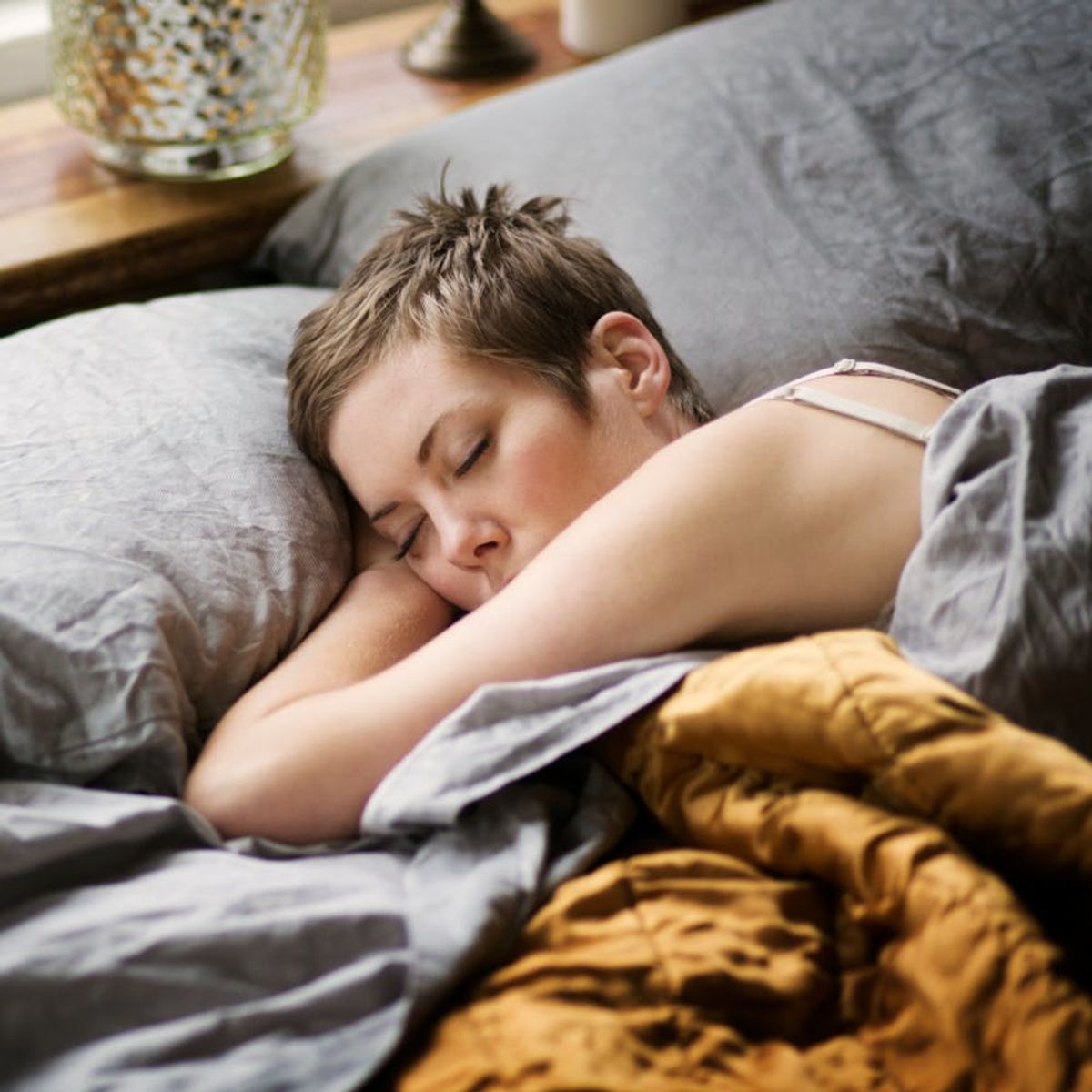It’s time for the best rest of your life.
5 Tried-and-True Tips for a Better Night’s Sleep

You’ve probably heard this before, but it bears repeating — a simple nighttime routine is one of the most effective ways to get your best sleep, and your best sleep sets you on your way to your best health. But this doesn’t mean you have to start some super-intense, crazy-long list of new pre-bed rituals (that you’ll inevitably start resenting) to sleep well. We’ve been honing our own routines for a while now and wanted to share the tips, tricks, and tech that have helped us get to sleep, stay asleep, and fall back to sleep. So keep reading for the best rest of your life.

1. Remember timing is everything. A healthy sleep schedule starts with one major tenet — a consistent bedtime every night. Sure, it may sound like we’re regressing to elementary school when our parents made us get into bed at 8pm every evening, but it turns out parents do actually know best sometimes! Setting a specific bedtime every night signifies to your body and mind you’re preparing for sleep, and you’ll begin to notice that those feelings of relaxation and “turning off” begin to come naturally at the same time every night. Think about it — the day/night cycle is fixed by nature, so it stands to reason your internal clock benefits from similar consistency.
2. Stay screen-free. Having a regular bedtime doesn’t mean you have to jump under the covers at 9pm every night with the lights off, but it does mean you should keep your eyes off your phone, TV, or computer screen. We’ve all heard the dangers of the dreaded blue light — insomnia, premature skin aging, eye fatigue… ugh. To combat this, we suggest starting your bedtime routine about an hour before you’d actually like to be asleep. This gives you time to do your nightly skincare regimen, have a cup of tea, read, or even lay your clothes out for the next morning. It’s all about calming your mind, quieting your body, and chilling out!
3. Keep score. Want to sleep like a log? Try a sleep log. We’ve recently started using the app SleepScore, which monitors our sleep cycle by using our phones’ microphones and speakers to track body movement and breathing rates. Every morning, the app presents a report that details sleep duration, how long it took to fall asleep, the length of the REM cycle, and how long we were awake while in bed. Then, based on that data, the app makes recommendations for improving sleep or meeting our sleep “goals,” in the same way an app like Clue helps to better understand menstrual cycles. Knowledge is power!
4. Take steps. Is there a chocolate chip cookie recipe you know by heart? A country drive you’ve taken since you were in high school? What about a cleaning routine you’ve kept for years? Here’s a go-to method we use when we’re having trouble getting to sleep or staying asleep. In the same spirit as counting sheep, we’ve found that mentally working through a multi-step task helps us focus on something other than sleep, allowing us to drift off to dreamland stress-free. The familiarity of each step of the process (ah yes, it’s time to chop the onion!) coupled with the methodical nature of the chore (next up, the carrot!) will keep you focused on something other than the fact that you’re still awake — which is the quickest way to fall asleep.
5. Drift off to stories. We’ve waxed poetic about Calm before — besides being one of our favorite meditation apps, it has a special feature called Sleep Stories that we are newly obsessed with. A collection of soothing short fiction narrated by some of our favorite actors, authors, singers, and wellness practitioners, Sleep Stories is like a nightly bedtime story for grown-ups.
What nighttime routine helps you get your best sleep? Tweet us @BritandCo with tips on how you get restful zzz’s.
(Photo via Getty)



















